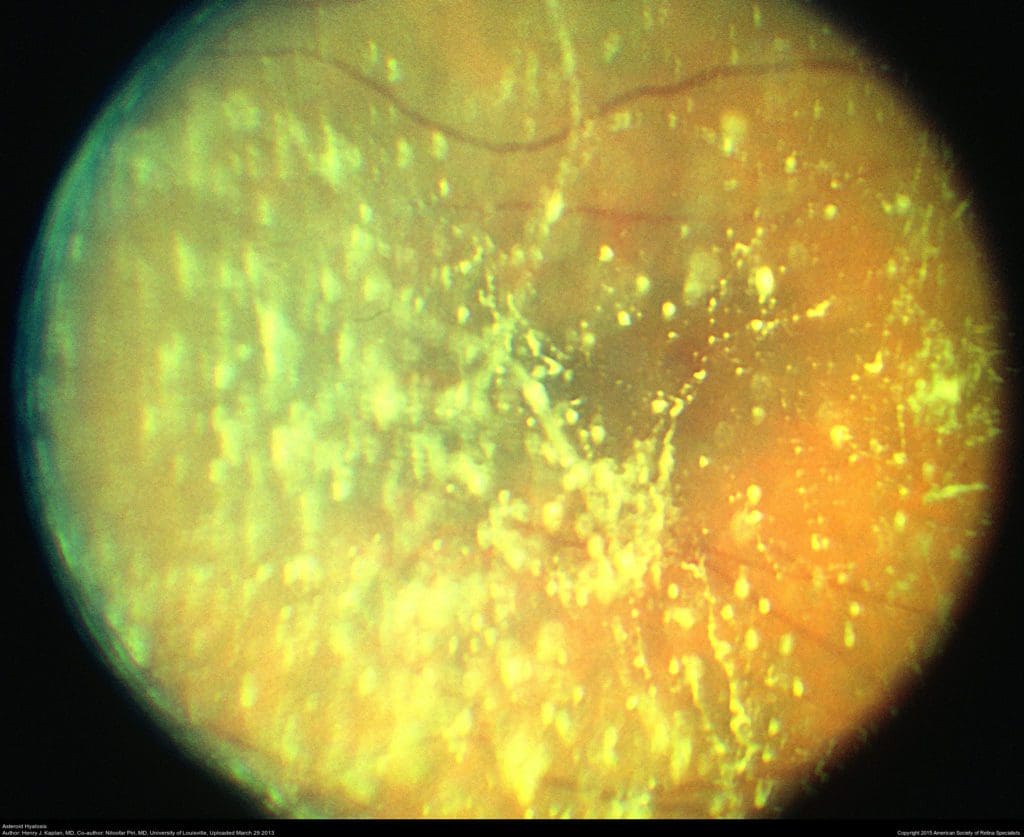
Floaters look like small specks, dots, circles, lines or cobwebs in your field of vision, while flashes can look like flashing lights or lightning streaks in your field of vision.
https://www.youtube.com/watch?v=pPQr6BgzhDA
What are floaters?
You may sometimes see small specks or clouds moving in your field of vision. These are called floaters. You can often see them when looking at a plain background, like a blank wall or blue sky.
Floaters are actually tiny clumps of gel inside the vitreous, the clear, thick fluid that fills the inside of your eye.
Although the floaters appear to be in front of the eye, they are actually floating in the vitreous fluid inside the eye.
While these objects look like they are in front of your eye, they are actually floating inside it. What you see are the shadows they cast on the retina, the layer of cells lining the back of the eye that senses light and allows you to see. Floaters can appear as different shapes, such as little dots, circles, lines, clouds, or cobwebs.
What causes floaters?
When people reach middle age, the vitreous gel begins to liquefy, collapse, and pull away from the back wall of the eye, causing a posterior vitreous detachment. This is the most common cause of floaters. Sometimes, vitreous floaters can be a sign of other, more serious eye conditions that require a thorough examination and treatment.
Posterior vitreous detachment is common, and occurs in 60% of people by the age of 60. It occurs earlier in people who are nearsighted, have undergone cataract surgery, experienced trauma, or have had inflammation inside the eye.
The appearance of floaters may be alarming, especially if they develop very suddenly. You should contact the doctor right away if you develop new floaters, as they very often a sign of a more serious problem that requires treatment.
Are floaters ever serious?
The retina can sometimes tear when the collapsing vitreous gel pulls away from the wall of the eye. This can cause a small amount of bleeding in the eye that may appear as new floaters.
A torn retina is always a serious problem, since it can lead to a retinal detachment. You should see the doctor as soon as possible if:
- Even one new floater appears suddenly
- You see sudden flashes of light (like lightning bolts)
- If you notice other symptoms, like the loss of side vision, see the doctor
Can floaters be removed?
Floaters can be removed, but that is not a priority when they occur. Examining the retina for tears and detachments is the first step. Floaters may be a symptom of a tear in the retina, which is a serious problem. If a retinal tear is not treated, the retina may detach from the back of the eye. The only treatment for a detached retina is surgery.
Floaters are usually harmless and fade over time or become less bothersome, requiring no treatment. Surgery to remove floaters is usually not required. Sometimes floaters are quite bothersome, and surgery may be indicated, especially if you have already had cataract surgery. Vitamin therapy will not cause floaters to disappear. Even if you have had floaters for years, you should schedule an eye examination with the doctor if you suddenly notice new ones.
What causes flashing lights?
When the vitreous gel pulls on the retina, you may see what look likes flashing lights or lightning streaks. You may have experienced this same sensation if you have ever been hit in the eye and seen “stars.â€
The flashes of light can appear off and on for several weeks or months. As we grow older, it is more common to experience flashes. If you notice the sudden appearance of light flashes, you should contact the doctor immediately in case the retina has been torn.
What is an ocular migraine?
Ocular migraine is a syndrome in which patients will suddenly develop an array of visual symptoms including flashing lights, blurred central or peripheral vision, a sudden blind spot or even total loss of vision. The hallmark of this condition is that it is temporary lasting anywhere from several minutes to an hour. It usually occurs in several episodes from days to weeks. It is more common in patients with a personal or family history of migraine headaches. There is no headache associated with ocular migraine. What differentiates an ocular migraine from the flashes and floaters associated with a retinal tear is the temporary nature and recurrent episodes.
